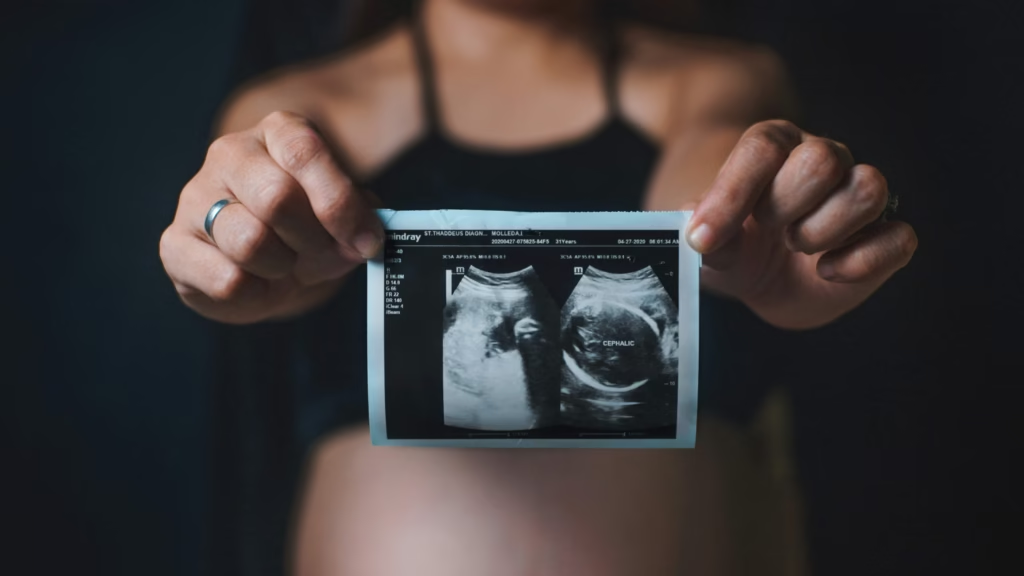Introduction
Did you know that approximately 30,000-60,000 children are born each year in the United States through sperm donation? Despite these numbers, visiting a sperm donation center remains shrouded in mystery for many people. Whether you’re considering becoming a donor or seeking donor sperm to build your family, your first visit to a sperm donation center can feel overwhelming.
This comprehensive guide will walk you through everything you need to know before making that initial appointment—from understanding what exactly happens at these facilities to navigating the emotional, legal, and medical aspects of the process. Let’s demystify the world of sperm donation centers together.
What Is a Sperm Donation Center?
A sperm donation center (also known as a sperm bank or cryobank) is a specialized facility that collects, tests, stores, and distributes donated sperm for the purpose of assisted reproduction. These centers serve as the critical intermediary between sperm donors and recipients—individuals or couples who need donor sperm to achieve pregnancy.
Modern sperm donation centers are sophisticated medical facilities governed by strict regulations and protocols. They play a vital role in today’s reproductive healthcare landscape by helping create pathways to parenthood for single women, LGBTQ+ couples, and heterosexual couples dealing with male factor infertility.
Unlike casual conceptions, sperm donation centers provide extensively screened samples, legal protections, and medical oversight that help ensure better outcomes for all parties involved.
Why It Matters
The significance of sperm donation centers extends far beyond simple biology. These facilities help create thousands of families each year who might otherwise not exist. For recipients, these centers represent hope—a chance to experience pregnancy and parenthood despite circumstances that might otherwise prevent it.
For donors, these facilities provide an opportunity to help others while receiving compensation, though many donors report altruistic motives as their primary reason for donation. According to a CDC report, donor sperm is used in approximately 5-10% of all assisted reproductive technology cycles in the United States.
Different family structures benefit from sperm donation in unique ways:
- Single women can pursue motherhood independently
- LGBTQ+ couples can experience biological parenthood
- Heterosexual couples with male infertility can have genetically-related children (to the mother)
- Individuals with genetic concerns can avoid passing certain conditions to their children
The Process
Understanding what happens at a sperm donation center helps demystify the experience for both donors and recipients. Here’s a breakdown of the typical process:
For Donors:
- Initial Application: Complete a detailed questionnaire about personal and family medical history, education, and physical characteristics.
- Screening Interview: Meet with staff to discuss the program requirements and commitment.
- Medical Screening: Undergo comprehensive testing for infectious diseases, genetic disorders, and overall health evaluation.
- Semen Analysis: Provide a sample to evaluate sperm count, motility, and morphology.
- Psychological Evaluation: Participate in an assessment to ensure psychological readiness for donation.
- Regular Donations: If accepted, commit to a schedule (typically 1-3 times per week for several months).
- Quarantine and Final Testing: Samples are frozen for 6 months while additional testing confirms no infectious diseases.
- Release to Recipient Program: After passing all screenings, samples become available to recipients.
For Recipients:
- Consultation: Meet with reproductive specialists to discuss treatment options and requirements.
- Donor Selection: Review donor profiles including medical history, physical traits, education, and personal essays.
- Purchase and Storage: Select and secure specimens, which the center will store until needed.
- Treatment Planning: Work with fertility specialists to determine the optimal timing and method for insemination.
- Insemination: Undergo either intrauterine insemination (IUI) or in vitro fertilization (IVF) using the donor sperm.
Most sperm donation centers now offer both anonymous and identity-release (open) donation programs, giving recipients options regarding future contact between donors and offspring.
Benefits and Considerations
Before visiting a sperm donation center, it’s important to weigh the potential benefits against the considerations:
Benefits:
- Medical Safety: Reputable centers screen donors for over 100 genetic conditions and infectious diseases.
- Legal Protection: Centers provide contracts that clarify parental rights and responsibilities.
- Quality Assurance: Samples are tested for viability and only those meeting high standards are released.
- Diverse Options: Recipients can select donors based on a wide range of characteristics.
- Support Services: Many centers offer counseling and guidance throughout the process.
Considerations:
- Cost: The process can be expensive, with sperm samples typically costing $500-$1,000 each, and most pregnancies requiring multiple attempts.
- Emotional Complexity: Both donors and recipients may experience unexpected feelings about the process and outcomes.
- Success Rates: According to the American Society for Reproductive Medicine, success rates per cycle range from 10-20% depending on the method used and the recipient’s age.
- Identity Questions: Children conceived through donation may have questions about their genetic origins.
Recent studies show that being open with children about their donor origins from an early age leads to better psychological outcomes than revealing this information later in life.
Common Misconceptions
When it comes to sperm donation centers, several myths persist that can create unnecessary anxiety or confusion:
Myth 1: Anyone can become a sperm donor.
Reality: Reputable sperm banks accept less than 5% of applicants. Donors must pass rigorous screening for health, genetics, sperm quality, and psychological readiness. They also typically need to be between 18-39 years old and commit to a regular donation schedule.
Myth 2: Sperm donation is just a quick way to make money.
Reality: While donors are compensated (typically $100-$150 per approved sample), the process requires significant commitment—including abstaining from ejaculation for 2-5 days before each donation, maintaining specific health practices, and committing to regular donations over months.
Myth 3: Sperm donors have parental rights or obligations to resulting children.
Reality: Donors at established sperm donation centers sign legal contracts relinquishing all parental rights and responsibilities. These contracts have been consistently upheld in courts across the United States.
Myth 4: Donor-conceived children are psychologically disadvantaged.
Reality: Research published in the journal Fertility and Sterility shows that donor-conceived children develop normally and have psychological wellbeing comparable to naturally conceived children.
Legal and Ethical Aspects
The legal landscape surrounding sperm donation centers varies significantly by location, making it essential to understand the regulations in your specific area:
In the United States, the FDA regulates sperm donation through requirements for donor screening and testing. However, laws regarding donor anonymity, compensation, and parental rights vary by state. Some states, like Washington and California, have more comprehensive laws protecting all parties involved in the donation process.
Outside the US, policies differ dramatically. For example:
- The UK, Australia, and New Zealand have abolished donor anonymity, giving offspring the right to identify their donors once they turn 18.
- Canada prohibits payment for sperm donation beyond expense reimbursement.
- Some European countries restrict sperm donation to married heterosexual couples.
Ethically, the field continues to evolve around questions of:
- Donor Limits: How many families should one donor be allowed to help create? Most US centers limit donors to 25-30 families, though this varies.
- Anonymity vs. Identity-Release: There’s growing recognition of donor-conceived individuals’ desire to know their genetic origins.
- Informed Consent: Ensuring all parties fully understand the long-term implications of their decisions.
Before your visit to a sperm donation center, research your local laws and consider consulting with a reproductive attorney for personalized guidance.
Support and Resources
The journey through a sperm donation center—whether as a donor or recipient—can benefit greatly from proper support. Here are resources to consider:
Organizations and Support Groups:
- RESOLVE: The National Infertility Association – Offers support groups and resources for those building families through donor assistance
- Family Equality Council – Provides specific resources for LGBTQ+ family building
- Donor Conceived Community – Support for individuals conceived through donation
Finding Reputable Sperm Donation Centers:
- Look for centers accredited by the American Society for Reproductive Medicine (ASRM)
- Verify FDA registration and compliance
- Check for membership in the Society for Assisted Reproductive Technology (SART)
Recommended Reading:
- “Building a Family with the Assistance of Donor Insemination” by Ken Daniels
- “The Sperm Donor’s Daughter: and Other Tales of Modern Family” by Katrina Clark
- “Experiences of Donor Conception: Parents, Offspring and Donors through the Years” by Caroline Lorbach
Consider seeking professional counseling before, during, and after the donation process. Many fertility clinics have counselors specializing in the unique emotional aspects of assisted reproduction.
Conclusion
Preparing for your first visit to a sperm donation center involves much more than simply finding the nearest facility. Understanding the comprehensive screening process, legal implications, and emotional aspects helps ensure a positive experience for everyone involved.
Whether you’re considering becoming a donor or using donor sperm to build your family, approach the process with thorough research and self-reflection. The most successful journeys through sperm donation centers involve careful consideration of both the practical and emotional elements.
Remember that each sperm donation center operates slightly differently, so don’t hesitate to call ahead with specific questions about their procedures, costs, and support services. By arming yourself with knowledge and choosing a reputable facility, you’re taking the first steps toward a potentially life-changing experience—either helping others create families or building your own.
Frequently Asked Questions
How much do sperm donors get paid?
Compensation varies by facility, but most sperm donation centers in the U.S. pay between $100-$150 per approved sample. Active donors typically earn $1,000-$1,500 monthly if donating regularly. Some centers also offer bonuses for long-term commitment or special programs.
What percentage of applicants are accepted as sperm donors?
Less than 5% of applicants successfully complete the screening process and become active donors at reputable sperm banks. The stringent requirements for health, sperm quality, genetic history, and commitment level mean that most men who apply aren’t accepted.
How long does donor sperm remain viable once frozen?
Properly cryopreserved sperm at a professional sperm donation center can remain viable for decades. There have been successful pregnancies using sperm that was frozen for over 20 years. Most centers guarantee the quality of their samples when stored under their controlled conditions.
Can I choose physical characteristics of a sperm donor?
Yes, most sperm donation centers allow recipients to select donors based on physical traits such as height, eye color, hair color, and ethnicity. Many also provide additional information about donors’ education, hobbies, personality, and even childhood photos to help recipients make their selection.
Will my child be able to contact the sperm donor in the future?
This depends on the type of donation program you choose. Many sperm donation centers now offer both anonymous and identity-release (open) donation options. With identity-release programs, offspring can typically access their donor’s identity once they reach 18, though specific policies vary by center.







